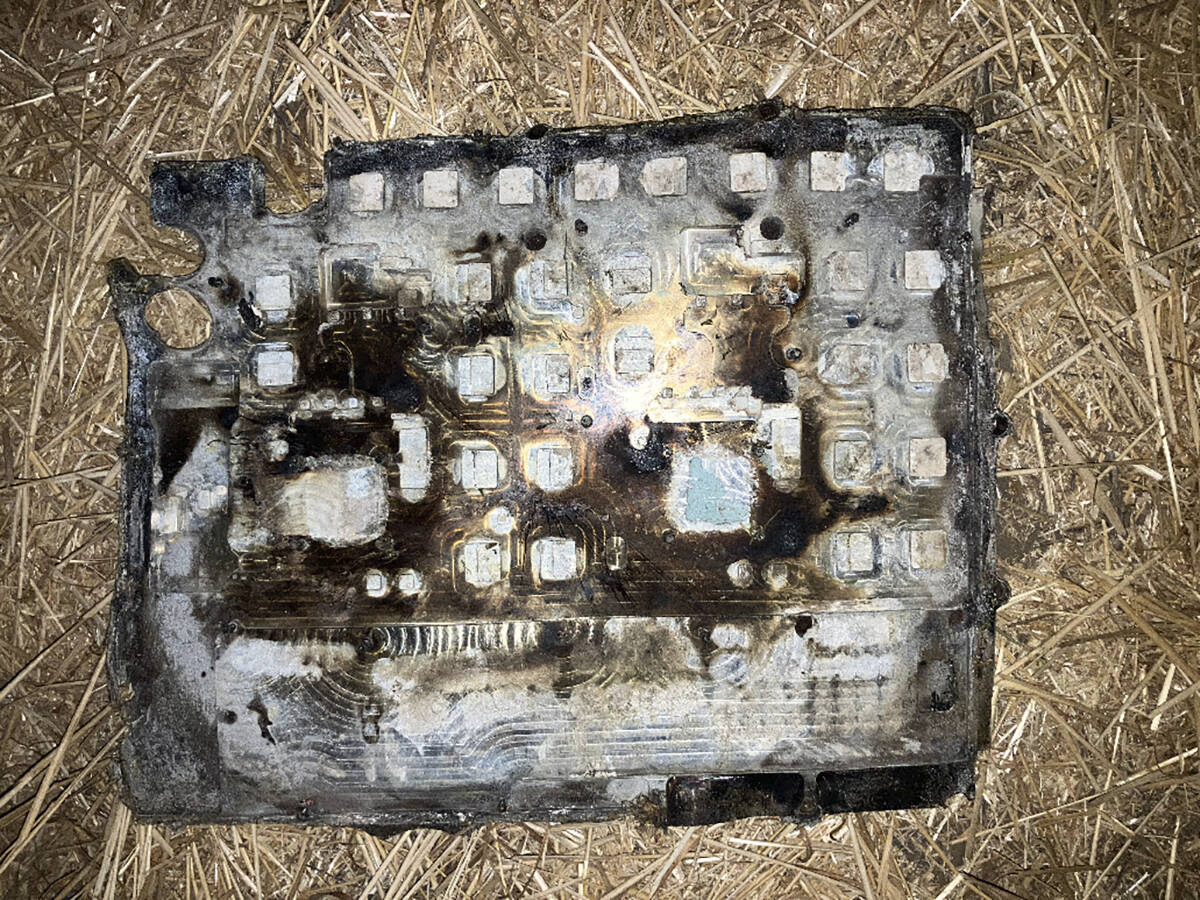Western Grains Research Foundation is funding a four-year study into whether RNA interference could be used to better manage the crop pest
Wireworms may soon have a new enemy.
The enemy has a long name, ribonucleic acid interference, but it’s better known as RNAi.
Agriculture Canada scientists in Lethbridge are studying the potential of RNAi to control wireworms, which feed on cereal and pulse crops early in the growing season, causing crop thinning or yellowing of the plant.
For about 15 years, wheat growers in Alberta and parts of Saskatchewan relied on neonicotinoid seed treatments to control wireworms. But the insecticide only immobilizes wireworms; it doesn’t kill the pest or reduce wireworm populations.
Read Also

Farmers asked to keep an eye out for space junk
Farmers and landowners east of Saskatoon are asked to watch for possible debris in their fields after the re-entry of a satellite in late September.
In 2020, BASF registered a new insecticide, called broflanilide, which reduces the number of wireworms in the soil. That should provide some relief from the pest, but alternative solutions are still needed. That’s why the Western Grains Research Foundation is funding a four-year study of wireworms and RNAi.
RNA receives less attention than DNA, but its principal role in biology is to act as a messenger, carrying instructions from DNA to make proteins.
“RNA plays a central role in turning genetic information into your body’s proteins,” says livescience.com.
RNA interference is a process where RNA inhibits gene expression and the formation of proteins. RNAi occurs naturally, in response to foreign DNA and double-stranded RNA (dsRNA) and is a crucial tool for fighting off viruses.
In agriculture, scientists have learned that RNAi can be used to fight crop pests, by designing a double stranded RNA that targets certain genes in a pest.
Bayer has employed RNAi to tackle corn rootworm, a major pest of corn growers.
“By interfering with a corn rootworm’s ability to create a specific protein critical to its own survival, RNAi technology effectively causes mortality after ingestion,” Bayer said in a summary of its Smartstax Pro technology, which will be available this year in corn hybrids in America.
The RNAi wireworm project is years away from commercialization because Agriculture Canada scientists are still working on a proof of concept.
John Laurie, a molecular biologist who joined Agriculture Canada in 2017, is leading the project. His main collaborator is Haley Catton, the wireworm expert at Agriculture Canada in Lethbridge
“They (wireworms) come up close to the soil surface and they’re detecting anything that produces CO2. (That’s) what germinating seeds produce,” said Catton, a cereal crop entomologist. “A very young, young plant, or even a seed that’s just germinating, is very vulnerable to death with just a few bite marks in the right place.”
To understand if RNAi is feasible for wireworms, Laurie and his colleagues sequenced the RNA of three species of wireworms, which are the larval stage of click beetles. They now have an “inventory” of the genes that are expressed by the RNA.
The target genes in the wireworm could be related to metabolism or some digestive process, which would effectively kill the larvae.
“That’s why it’s a very promising technology. Because we can design the double stranded RNA to target specifically the organism you want to take out,” Laurie said. “You can design them in such a way that they’re not going to target beneficial insects or something else.”
Once they select a suitable wireworm gene or genes to silence, the next question is how to get the RNA into the wireworms.
“For RNAi to work, you’ve got to get double stranded RNA into the cell (of the pest)… to mess them up,” he said.
Bayer is using a transgenic approach, in which the corn plant makes the double stranded RNA. The corn rootworm dies when it eats the plant’s tissue because the RNA interferes with a biological process in the corn rootworm.
Laurie isn’t going down the transgenic road.
He’s looking at coating the seed with double stranded RNA.
That’s a bit tricky with wireworms because they don’t actually take bites of seed.
“They eat extra-orally. Outside their mouth. They secrete enzymes that digest their food and then suck it up,” he said.
It’s almost like spitting on a cracker, waiting for it to dissolve and then sucking it up with a straw.
“We hope that when they suck up (their food), they suck up a whole bunch of RNA with their meal,” Laurie said.
Another possibility is a coating that gets absorbed by the seed.
“The young seedling fills up with that double stranded RNA,” he said.
“Instead of being genetically modified, the plants pick up the double stranded RNA…. have it delivered to the plant tissue, the tissue gets eaten and then (into the wireworm).”
This year, Laurie and members of his lab will test different ways to “feed” RNA to wireworms to see which method makes the most sense.
If that goes well, the next step would be a greenhouse pot trial with wireworms in the soil.
All this research is possible because RNA technology is now more affordable. The pandemic has actually helped with this because companies and governments invested billions to develop mRNA vaccines. Today, producing RNA on a large scale is a fraction of the previous cost.
“Ten to 15 years ago, it was so expensive to make RNA that it was kind of a dream to use it in a field,” Laurie said.
The research remains in the early stages, but as RNAi technology becomes more commonplace in agriculture, Canadian farmers could be using the technology on wireworms before the end of the decade.
“Ideally, probably by five (years),” Laurie said.


















